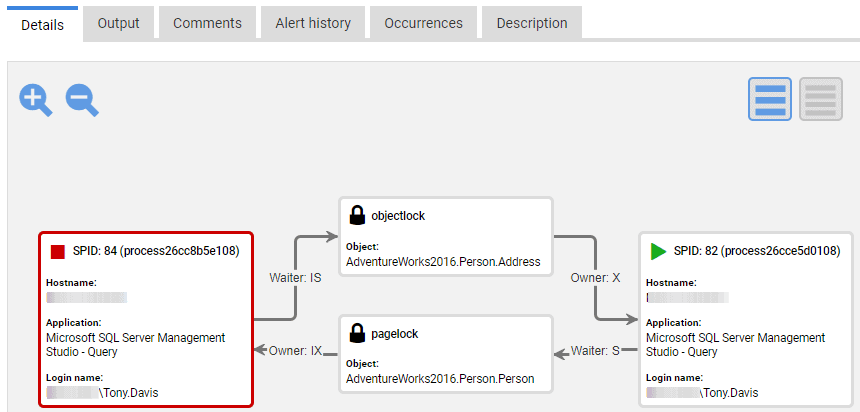

Thursday, Decem11:02:57 AM - Greg Robidouxīack To Top - once you figure out the SQL statements that are causing the deadlock you need to figure out where these are being called and when they are called. so Elimation can be done.So Please let me know to tacle Presous deadlock information. I am getting which statement getting deadlock.I want read presous statement History. Step 1: dbcc traceon (1204, 3605, -1) go dbcc tracestatus(-1) go to enable the trace for all spid Step 2: next " Next, you must collect a SQL Profiler trace" I've read Microsoft document and it seems that this is not a selection between 2 steps but these steps have to be done together. To do this using SQL Profiler, you will need to capture the Lock Events Lock:Deadlock and Lock:Deadlock Chain. With the trace there are a couple of additional items that need to be captured to help figure out what is going on and with what objects. This can be done by either using Profiler or by using a To provide further information about the deadlock process you will need to run a Trace to capture all of the information and then try to decipher what is going on. With this information it is possible to see what tables were part of the deadlock process, but trying to figure out what statements caused the problem is much more difficult. for pointing out the error as well as using the object_name function. SELECT object_name(117575457) -(returns Products) SELECT object_name(1977058079) -(returns Employees) The “victim” session is chosen according to the session’s deadlock priority.-Another option to find the tables is to use the object_name function: The value LOW corresponds to ?5, NORMAL (the default value) corresponds to 0, and HIGH corresponds to 5. There are 21 different priority levels, from ?10 to 10. You can affect which transaction the system chooses as the “victim” by using the DEADLOCK_PRIORITY option of the SET statement.

(The other transaction is executed after that.) A programmer can handle a deadlock by implementing the conditional statement that tests for the returned error number (1205) and then executes the rolled-back transaction again. If both transactions in Example 13.5 are executed at the same time, the deadlock appears and the system returns the following output:Īs the output of Example 13.5 shows, the database system handles a deadlock by choosing one of the transactions as a “victim” (actually, the one that closed the loop in lock requests) and rolling it back.

Therefore, Example 1 below uses the WAITFOR statement to pause both transactions for ten seconds to simulate the deadlock. The parallelism of processes cannot be achieved naturally using the smallsampledatabase, because every transaction in it is executed very quickly. (In general, several transactions can cause a deadlock by building a circle of dependencies.)Įxample 1 below shows the deadlock situation between two transactions. The first transaction has a lock on some database object that the other transaction wants to access, and vice versa. A SQL Server deadlock is a special concurrency problem in which two transactions block the progress of each other.


 0 kommentar(er)
0 kommentar(er)
